Test drive Ferrari F355 1994 - 1999 compartment
Simple formula
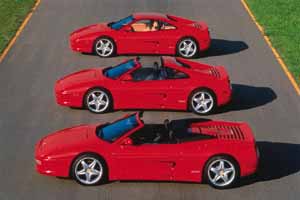 It all started in 1978, when the Ferrari 312T2 Bolides Vilnev experienced a transmission with a new control method for Formula-1. It didn’t come to the racing - they did not take risks in combat conditions. The debut took place after 11 years. In the first race of the 1989 season in Brazil, Ferrari puts up the car 639 (also known as Ferrari F1-89) with an electro-hydraulic transmission control system. The first race brings the first victory. She is behind Nigel Mansell.
It all started in 1978, when the Ferrari 312T2 Bolides Vilnev experienced a transmission with a new control method for Formula-1. It didn’t come to the racing - they did not take risks in combat conditions. The debut took place after 11 years. In the first race of the 1989 season in Brazil, Ferrari puts up the car 639 (also known as Ferrari F1-89) with an electro-hydraulic transmission control system. The first race brings the first victory. She is behind Nigel Mansell. 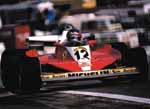 In that season, the Ferrari team was not only a pioneer, but also a monopolist in terms of use of electro -hydraulics. Therefore, numerous statements have been rained down that the use of this system would inevitably lead to a rise in the cost of racing - not all formula teams could afford the purchase, and even more so the development of such a transmission. And its advantages were obvious and tangible.
In that season, the Ferrari team was not only a pioneer, but also a monopolist in terms of use of electro -hydraulics. Therefore, numerous statements have been rained down that the use of this system would inevitably lead to a rise in the cost of racing - not all formula teams could afford the purchase, and even more so the development of such a transmission. And its advantages were obvious and tangible. The control of the box and clutch is carried out on the steering wheel. The hands of the pilot are always on the steering wheel, which allows you to not lose control of the trajectory of movement when switching gears.
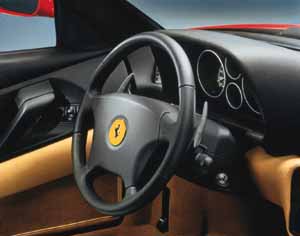 The abolition of the clutch pedal made it possible to reduce the width of the pedal unit and, accordingly, narrow the bow of the car and improve the aerodynamics of the machine.
The abolition of the clutch pedal made it possible to reduce the width of the pedal unit and, accordingly, narrow the bow of the car and improve the aerodynamics of the machine. Switching transfers is much faster, almost without exposure to the flow of torque, and does not lead to instant failures of the clutch of the drive wheels with asphalt.
The advantages of the new management method were so obvious that only a year later, Frank Williams Frank, Frank Williams, equipped his car with a similar transmission. In 1991, the turn of McLaren came, and subsequently the transmission with the electron-hydraulic control began to be equipped with all Formula-1 machines.
But Ferrari is not only a racing team. These are the magnificent highways of the GT class, for which Formula-1 has always been a training ground for checking new technical solutions. Sooner or later, many of them switched to serial models. Here are just a couple of examples. A ultra -resistant carbon fiber monocock, used in 1984 on the Ferrari 126C4 car, was used in 1987 in the Ferrari F40 car. The engine and transmission that were included in the power scheme of the body and chassis), which appeared in 1964 on the Ferrari 158/F1 car, could be seen on Ferrari F50 in 1995.
And here is the next parallel: Ferrari 639 - Ferrari 355f1 with a formula transmission. Since the start of Mansell in Brazil before the presentation of 355f1 at the Frankfurt IAA 97, eight and a half years have passed.
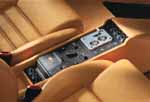 Model 355 is the most massive, cheap (compared to other Ferrari models) and well -sold. The latter circumstance refutes all the statements that 355f1 is only a propaganda step to maintain customer demand. The task of the project is to use the advanced transmission on the highway, providing the optimal distribution of the moment with minimal losses when switching gear. And at the same time, contribute to maximum traffic safety, coupled with ease of use and without a significant increase in the cost of the machine itself. Therefore, it is not surprising that it was the 355th that decided to use as a carrier of the adapted transmission, and with the maximum unification and use of existing units and details from the arsenals of the plant and the team. Ferrari's long -standing racing partners were also involved in the development. The electronic part of the project was supervised by Magnetti Marelli, and the hydraulic - Bendix.
Model 355 is the most massive, cheap (compared to other Ferrari models) and well -sold. The latter circumstance refutes all the statements that 355f1 is only a propaganda step to maintain customer demand. The task of the project is to use the advanced transmission on the highway, providing the optimal distribution of the moment with minimal losses when switching gear. And at the same time, contribute to maximum traffic safety, coupled with ease of use and without a significant increase in the cost of the machine itself. Therefore, it is not surprising that it was the 355th that decided to use as a carrier of the adapted transmission, and with the maximum unification and use of existing units and details from the arsenals of the plant and the team. Ferrari's long -standing racing partners were also involved in the development. The electronic part of the project was supervised by Magnetti Marelli, and the hydraulic - Bendix. The system of the system is as follows. Actually, the 6-speed box itself and the clutch of the standard 355th model remained unchanged, receiving only hydraulic drives performing commands of the electronic control unit. And the block receives commands to switch the gears from two buttons, structurally made in the form of levers (like steering wheel switches), which are placed on the steering wheel behind the steering wheel. The driver controls the levers, twitching them with the middle and ring fingers.
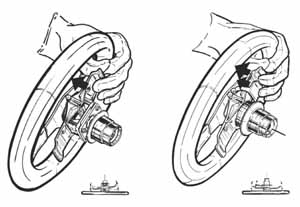 Switching chassis is sequentially: 1-2-3-4-5-6 and vice versa, each twitching of the UP lever switchs the transmission by one up, the Down lever is one down. The inclusion of the rear gear is taken to the central console.
Switching chassis is sequentially: 1-2-3-4-5-6 and vice versa, each twitching of the UP lever switchs the transmission by one up, the Down lever is one down. The inclusion of the rear gear is taken to the central console. Having received the first UP command after starting the engine (turn on the first, second or rear gear for touching only when the brake pedal is pressed), the system squeezes the clutch and turns on the first gear. When you press the gas pedal, the system optimally releases the clutch based on the number of engine speeds, the angle and the speed of moving the gas pedal. The car is touching, while the clutch slip is excluded.
Having received the following UP (+1) command in motion, the system analyzes the number of engine speeds and the speed of the car, determining whether it corresponds to the selected gear. Further, in accordance with the torque of the engine, the clutch turns off - so as to prevent it from slipping or a sharp increase in revolutions. Then hydraulics turns on the selected gear and releases the clutch. The whole procedure takes no more than 200 milliseconds ...
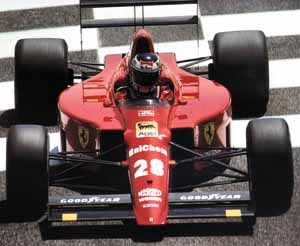 There is also a change of gears when twitching the Down lever, only in the opposite direction. When switching, the electronics takes into account a large number of parameters: the angle and speed of opening the throttle, engine speed and transmission, the speed of the car, their compliance with the selected gear and even the temperature of the engine. You can switch transmissions with both drowned and partially or completely released gas pedal and as quickly - the speed of the system is more than sufficient, and numerous locks and limiters will not allow the engine to reach a dangerous mode.
There is also a change of gears when twitching the Down lever, only in the opposite direction. When switching, the electronics takes into account a large number of parameters: the angle and speed of opening the throttle, engine speed and transmission, the speed of the car, their compliance with the selected gear and even the temperature of the engine. You can switch transmissions with both drowned and partially or completely released gas pedal and as quickly - the speed of the system is more than sufficient, and numerous locks and limiters will not allow the engine to reach a dangerous mode. So that the driver does not keep in memory the number of appeals to the levers, the number of the transmission on is displayed in the window between the speedometer and the tachometer on the instrument panel.
If the racing team each time selects the transmission setting for a specific route and weather conditions, then the owner of the Ferrari 355f1 should not understand these subtleties at all. Therefore, the transmission provides the driver with the opportunity to choose macro mode of movement: sports, normal, movement mode along a slippery road, as well as a full-fledged mode of automatic box. By the way, when the sports regime is turned on, the suspension rigidity automatically increases. The selection buttons are located on the central console, next to the rear door lever.
Formal transmission F1 is equipped with all three versions of Ferrari 355 - Berlinetta, Targa and Spider.
Ivan V. Paderin
Source: Magazine Motor





